The cost of Ankle Fusion Surgery in Czechia ranges from CZK 118895 to 154972 (USD 5240 to USD 6830)
Ankle Arthrosis is a surgery that eliminates ankle pain that is debilitating to the point of immobility in the joint. It is usually caused because of ankle arthritis. Ankle Fusion surgery fuses two or more than two bones in the ankle. The pain and the swelling subside as a result of a patient getting this surgery done. Initially, you may need support to walk in the form of crutches or walkers for about six weeks to eight weeks. You can start to put weight on your ankles, in consultation with your orthopaedic surgeon. The recovery time period after the ankle fusion surgery is from six weeks to sixteen weeks. The rate of success of ankle fusion surgery is 80% and above.
Prague, the capital city of Czech Republic, is an economic and cultural center. It is also home to exceptional healthcare infrastructure that caters to the needs of not only domestic but international medical travelers as well. The people who come to Prague for their surgeries and medical treatments find the best of doctors and surgeons, healthcare, and administrative staff. We list here some of the good hospitals, clinics, medical centers in Prague, the Czech Republic where you can get Ankle Fusion surgery done. Military University Hospital, Prague Center Prof. CECH Ltd., Prague Polyclinic Medifin, Prague Na Homolce Hospital, Prague Motol Teaching Hospital, Prague Hospital Na Bulovce, Prague Hospital Na Frantisku, Prague ATODA Medical, Prague Canadian Medical Care, Prague Prague Medical Institute-Orthopedic, Prague Bulovka Hospital, Prague VAMED Mediterra Hospitals, Prague Klinika GHC Praha, Prague Royal Medical, Prague European Patient Service, Prague Medtempl, Prague
Ankle Fusion Surgery cost in Prague, Czech Republic is US$ 6200. This is much lesser than the cost of ankle fusion surgery in the United States of America is US$ 20, 200.
| Country | Cost | Local_currency |
|---|---|---|
| Czechia | USD 5240 | Czechia 118896 |
| Greece | USD 7000 | Greece 6440 |
| Hungary | USD 5000 | Hungary 1742800 |
| India | USD 4010 | India 333432 |
| Israel | USD 20000 | Israel 76000 |
| Lithuania | USD 3090 | Lithuania 2843 |
| South Korea | USD 12000 | South Korea 16112280 |
| Spain | USD 22000 | Spain 20240 |
| Tunisia | USD 3900 | Tunisia 12129 |
| Turkey | USD 7020 | Turkey 211583 |
| United Kingdom | USD 6230 | United Kingdom 4922 |
Treatment cost

The cost for Ankle Fusion Surgery ranges from USD 5280 - 6420 in Rehabilitation Clinic Malvazinky
Rehabilitation Clinic Malvazinky located in Prague, Czechia is accredited by JCI. Also listed below are some of the most prominent infrastructural details:
SPECIALITIES
FACILITIES & AMENITIES

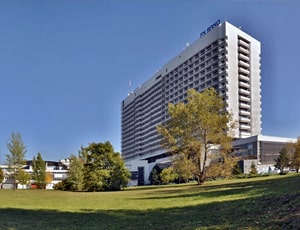
The cost for Ankle Fusion Surgery ranges from USD 5240 - 6830 in Czech Medical Center
Apart from in-detail treatment procedures available, Czech Medical Center located in Brno, Czechia has a wide variety of facilities available for International Patients. Some of the facilities which are provided by them are Accommodation, Airport Transfer, Choice of Meals, Interpreter, SIM, TV inside room. Also listed below are some of the most prominent infrastructural details:
DOCTORS IN 12 SPECIALITIES
FACILITIES & AMENITIES
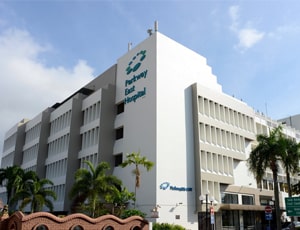
Parkway East Hospital located in Joo Chiat Pl, Singapore is accredited by JCI. Also listed below are some of the most prominent infrastructural details:
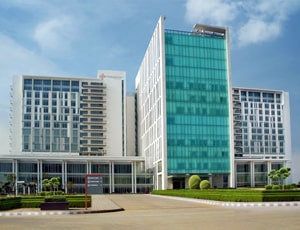
Types of Ankle Fusion Surgery in Medanta - The Medicity and its associated cost
| Treatment Option | Approximate Cost Range (USD) | Approximate Cost Range (INR) |
|---|---|---|
| Ankle Fusion Surgery (Overall) | 5117 - 9179 | 416211 - 738400 |
| Ankle Arthrodesis | 2285 - 4553 | 184792 - 376912 |
| Open Ankle Fusion Surgery | 3392 - 6771 | 282236 - 546488 |
| Arthroscopic Ankle Fusion | 4489 - 7723 | 362084 - 634038 |
| Minimally Invasive Ankle Fusion | 5707 - 9114 | 466324 - 740330 |
| External Fixation Ankle Fusion | 6775 - 9054 | 550097 - 736341 |
DOCTORS IN 14 SPECIALITIES
FACILITIES & AMENITIES

Mount Elizabeth Hospital located in Singapore, Singapore is accredited by JCI. Also listed below are some of the most prominent infrastructural details:
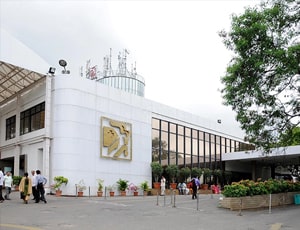
Types of Ankle Fusion Surgery in Apollo Hospitals and its associated cost
| Treatment Option | Approximate Cost Range (USD) | Approximate Cost Range (INR) |
|---|---|---|
| Ankle Fusion Surgery (Overall) | 4998 - 8906 | 406893 - 737050 |
| Ankle Arthrodesis | 2241 - 4524 | 187920 - 374431 |
| Open Ankle Fusion Surgery | 3338 - 6855 | 281663 - 556829 |
| Arthroscopic Ankle Fusion | 4532 - 8049 | 364545 - 656191 |
| Minimally Invasive Ankle Fusion | 5735 - 8924 | 467069 - 735277 |
| External Fixation Ankle Fusion | 6665 - 9128 | 543269 - 734050 |
DOCTORS IN 14 SPECIALITIES
FACILITIES & AMENITIES
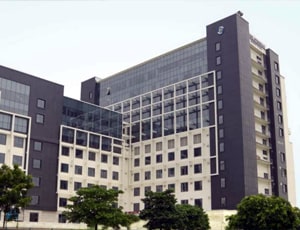
Types of Ankle Fusion Surgery in Venkateshwar Hospital and its associated cost
| Treatment Option | Approximate Cost Range (USD) | Approximate Cost Range (INR) |
|---|---|---|
| Ankle Fusion Surgery (Overall) | 4584 - 8111 | 372914 - 667037 |
| Ankle Arthrodesis | 2032 - 4045 | 165648 - 331317 |
| Open Ankle Fusion Surgery | 3057 - 6116 | 250673 - 497728 |
| Arthroscopic Ankle Fusion | 4056 - 7119 | 332567 - 584099 |
| Minimally Invasive Ankle Fusion | 5051 - 8088 | 415247 - 665863 |
| External Fixation Ankle Fusion | 6073 - 8150 | 498068 - 663961 |
DOCTORS IN 13 SPECIALITIES
FACILITIES & AMENITIES

Gleneagles Hospital located in Napier Road, Singapore is accredited by JCI. Also listed below are some of the most prominent infrastructural details:
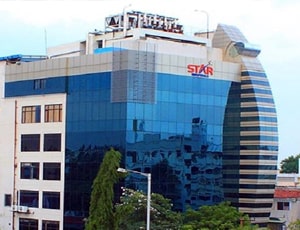
Types of Ankle Fusion Surgery in Star Hospitals and its associated cost
| Treatment Option | Approximate Cost Range (USD) | Approximate Cost Range (INR) |
|---|---|---|
| Ankle Fusion Surgery (Overall) | 4266 - 7427 | 349592 - 615594 |
| Ankle Arthrodesis | 1854 - 3760 | 155765 - 303284 |
| Open Ankle Fusion Surgery | 2828 - 5622 | 233553 - 454475 |
| Arthroscopic Ankle Fusion | 3684 - 6637 | 309830 - 529066 |
| Minimally Invasive Ankle Fusion | 4657 - 7512 | 381484 - 614646 |
| External Fixation Ankle Fusion | 5529 - 7484 | 454092 - 609022 |
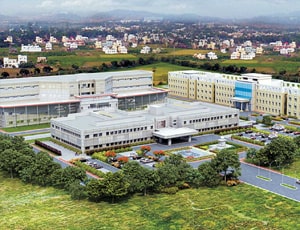
Types of Ankle Fusion Surgery in Global Health City and its associated cost
| Treatment Option | Approximate Cost Range (USD) | Approximate Cost Range (INR) |
|---|---|---|
| Ankle Fusion Surgery (Overall) | 5010 - 8871 | 418473 - 740490 |
| Ankle Arthrodesis | 2202 - 4446 | 185898 - 361781 |
| Open Ankle Fusion Surgery | 3430 - 6796 | 273850 - 561294 |
| Arthroscopic Ankle Fusion | 4583 - 7977 | 369490 - 632144 |
| Minimally Invasive Ankle Fusion | 5728 - 9082 | 451576 - 728756 |
| External Fixation Ankle Fusion | 6670 - 9049 | 545319 - 724258 |

Types of Ankle Fusion Surgery in Primus Super Speciality Hospital and its associated cost
| Treatment Option | Approximate Cost Range (USD) | Approximate Cost Range (INR) |
|---|---|---|
| Ankle Fusion Surgery (Overall) | 4560 - 8106 | 374553 - 667100 |
| Ankle Arthrodesis | 2031 - 4042 | 166900 - 334519 |
| Open Ankle Fusion Surgery | 3034 - 6072 | 250465 - 497843 |
| Arthroscopic Ankle Fusion | 4056 - 7112 | 332740 - 581772 |
| Minimally Invasive Ankle Fusion | 5098 - 8100 | 418127 - 668378 |
| External Fixation Ankle Fusion | 6081 - 8128 | 497681 - 666604 |

Types of Ankle Fusion Surgery in Fortis Malar Hospital and its associated cost
| Treatment Option | Approximate Cost Range (USD) | Approximate Cost Range (INR) |
|---|---|---|
| Ankle Fusion Surgery (Overall) | 4557 - 8085 | 375137 - 664965 |
| Ankle Arthrodesis | 2028 - 4048 | 166955 - 332390 |
| Open Ankle Fusion Surgery | 3053 - 6082 | 249658 - 497415 |
| Arthroscopic Ankle Fusion | 4069 - 7072 | 334331 - 579993 |
| Minimally Invasive Ankle Fusion | 5084 - 8103 | 414994 - 664477 |
| External Fixation Ankle Fusion | 6065 - 8137 | 500748 - 662802 |
DOCTORS IN 9 SPECIALITIES
FACILITIES & AMENITIES
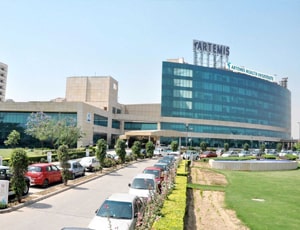
Types of Ankle Fusion Surgery in Artemis Health Institute and its associated cost
| Treatment Option | Approximate Cost Range (USD) | Approximate Cost Range (INR) |
|---|---|---|
| Ankle Fusion Surgery (Overall) | 4969 - 9070 | 420177 - 749611 |
| Ankle Arthrodesis | 2245 - 4511 | 187680 - 371362 |
| Open Ankle Fusion Surgery | 3345 - 6735 | 276859 - 552208 |
| Arthroscopic Ankle Fusion | 4480 - 7887 | 366878 - 637184 |
| Minimally Invasive Ankle Fusion | 5703 - 9139 | 455753 - 750353 |
| External Fixation Ankle Fusion | 6755 - 9083 | 547621 - 754342 |
DOCTORS IN 15 SPECIALITIES
FACILITIES & AMENITIES

Types of Ankle Fusion Surgery in Sterling Wockhardt Hospital and its associated cost
| Treatment Option | Approximate Cost Range (USD) | Approximate Cost Range (INR) |
|---|---|---|
| Ankle Fusion Surgery (Overall) | 4555 - 8159 | 374329 - 667126 |
| Ankle Arthrodesis | 2023 - 4049 | 166077 - 334473 |
| Open Ankle Fusion Surgery | 3035 - 6089 | 248880 - 499309 |
| Arthroscopic Ankle Fusion | 4041 - 7109 | 332661 - 584777 |
| Minimally Invasive Ankle Fusion | 5089 - 8081 | 414819 - 664123 |
| External Fixation Ankle Fusion | 6073 - 8144 | 498635 - 667584 |

Types of Ankle Fusion Surgery in Medicana International Istanbul and its associated cost
| Treatment Option | Approximate Cost Range (USD) | Approximate Cost Range (TRY) |
|---|---|---|
| Ankle Fusion Surgery (Overall) | 6705 - 11004 | 199248 - 345409 |
| Ankle Arthrodesis | 5442 - 7954 | 163835 - 240037 |
| Open Ankle Fusion Surgery | 6813 - 10134 | 199386 - 306360 |
| Arthroscopic Ankle Fusion | 7950 - 11130 | 247856 - 334891 |
| Minimally Invasive Ankle Fusion | 9285 - 11033 | 278936 - 339679 |
| External Fixation Ankle Fusion | 10955 - 11480 | 319238 - 339936 |
DOCTORS IN 10 SPECIALITIES
FACILITIES & AMENITIES
Ankle fusion operation, also known as ankle arthrodesis, is a surgical procedure conducted to close the joint space by joining the bones that make up the ankle joint.
Your ankle joint is an articulation of three bones. These three bones are known as the tibia, fibula, and the talus. During ankle fusion operation, the cartilage covering the bony surface of the ankle joint is scraped off. The diseased part of the bones is also trimmed.
Next, the newly exposed bony surface of the tibia and the talus are placed in close contact. Additionally, they are compressed using screws. New bone formation takes place in and around the joint resulting infusion of the bones into a single bone.
Ankle fusion operation is recommended for patients experiencing unbearable pain during ankle movement. The pain may result because of the following reasons:
Not all patients with the aforementioned conditions are always suitable for ankle fusion. Patients with the following characteristics are not suggested to undergo this surgery:
During the surgery, you are given either local anaesthesia or sedation to numb the entire ankle area. The doctor makes a small cut on the lateral side of the ankle through the skin so that the joint can be seen clearly. If more visibility is needed, the doctor makes an extra cut in the front of the ankle.
The doctor then uses a saw to remove the articular cartilage on the surface of the joint bones. The diseased bone is removed, exposing the healthy part of the bone. The healthy bone surfaces are compressed using large screws. The bones join naturally through deposition of bone material as is the case with natural fracture healing.
Sometimes, a doctor may place an artificial bone graft or a bone grafted from your fibula to ensure fast healing of the bony surfaces. Before placing the screws, the doctor carefully positions the ankle to ensure maximum movement possible. The ankle is placed at 90 degrees to the lower leg and the heel is slightly outwards. Then the skin is brought back in place and sutured together.
Ankle fusion recovery time depends on how seriously you take the following precautions after the surgery:
Arthroscopic ankle fusion surgery: This procedure is similar to the open ankle fusion surgery. However, the incision is very small and the entire procedure is carried out by inserting an instrument that has a camera attached to one end. It helps the doctor clearly view the interior cartilage and bones. Faster recovery and healing are the two advantages of this approach.
Ankle joint replacement: During this procedure, the entire ankle joint is replaced. The advantage of this technique over ankle fusion is that it retains complete movement of the ankle.
Ask your healthcare adviser for the best multiple options and choose the one that meets your expectations
Ankle Fusion Surgery cost in Czechia starts from about $6200. Only some of the best and certified hospitals in Czechia perform Ankle Fusion Surgery for international patients.
Ankle Fusion Surgery package cost in Czechia has different inclusions and exclusions. The cost quoted by some of the best hospitals for Ankle Fusion Surgery in Czechia generally covers the pre-surgery investigations of the patient. The treatment cost usually includes the expenses related to hospitalization, surgery, nursing, medicines, and anesthesia. A prolonged hospital stay due to delayed recovery, new diagnosis and complications after surgery may increase the cost of Ankle Fusion Surgery in Czechia.
Ankle Fusion Surgery in Czechia is offered by multiple hospitals across the country. The top hospitals for Ankle Fusion Surgery in Czechia include the following:
While the speed of recovery may vary from patient to patient, they are still required to stay for about 15 days after discharge. This period is important to conduct all the follow-up tests to ensure that the surgery was successful and the patient can go back to the home country.
Apart from the Ankle Fusion Surgery cost, the patient may have to pay for additional daily expenses such as for guest house after discharge and meals. These charges starts from USD 50 per person.
There are many cities that offer Ankle Fusion Surgery in Czechia, including the following:
The patient is supposed to stay at the hospital for about 3 days after Ankle Fusion Surgery for monitoring and care. The doctors team review the patient's recovery during this time with the help of blood tests and imaging scans. Once they feel that everything is on track, the patient is discharged.
There are more than 2 hospitals that offer Ankle Fusion Surgery in Czechia. The above mentioned clinics have the required infrastructure and a dedicated unit where patients can be treated. Apart from good services, the hospitals are known to follow all standard and legal guidelines as dictated by the local medical affairs body or organization.